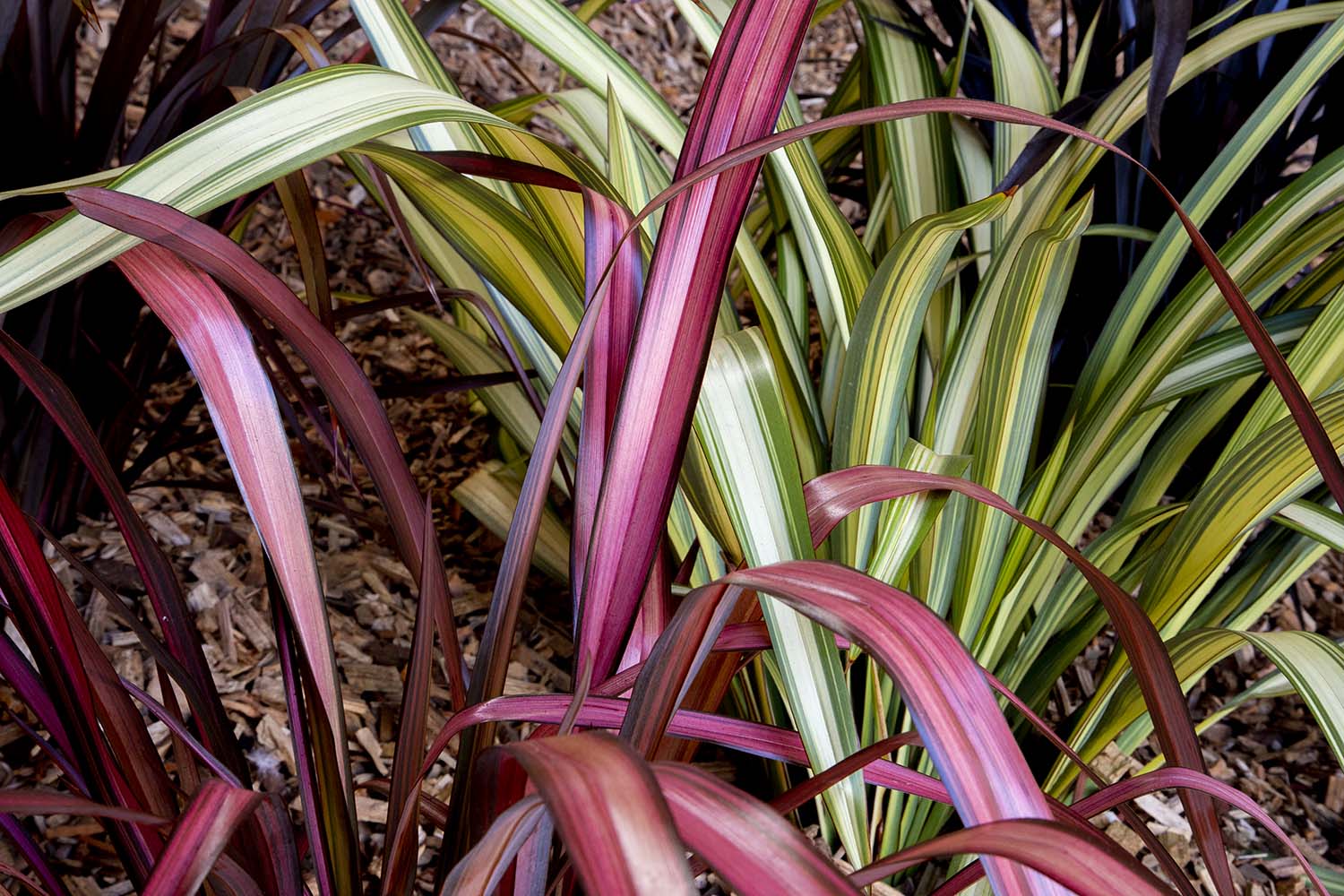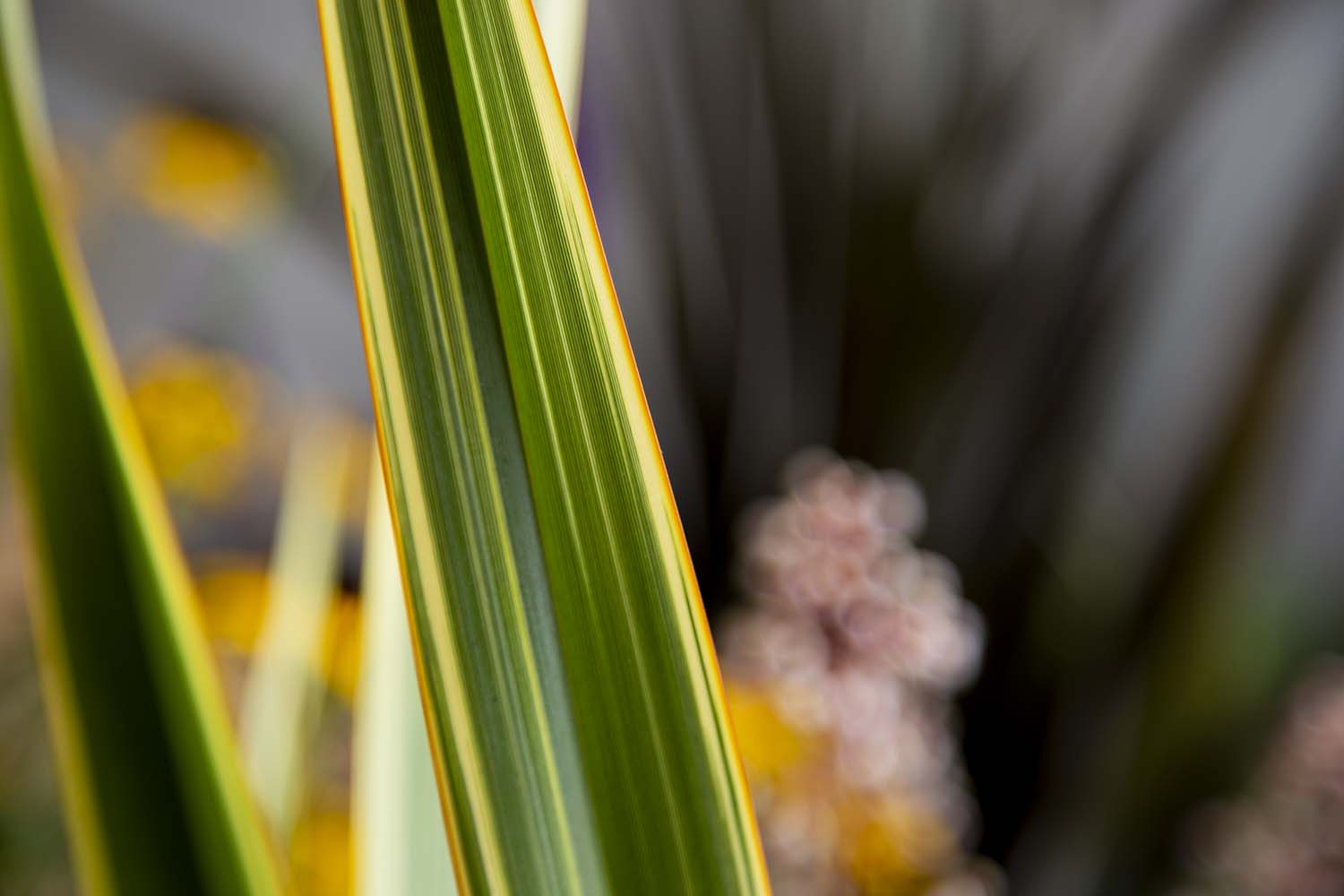Focus on: Phormiums
For year-round colour and low-intensity care, you can’t go wrong with New Zealand flax.
Why phormiums?
Phormiums are hardy, evergreen plants which boast dramatic shape and colour, making them a fantastic choice for a low-maintenance landscape in all seasons. They are equally at home as patio feature plants in containers, giving a burst of colour to gravel gardens, or creating height and interest in borders.
With distinctive, long blade-shaped leaves that come in a riot of colour, from every shade of green to bronze, purple, orange, yellow or red, phormiums can be planted to great ornamental effect, and allow you to maintain vivid colours in your garden all year round. The tubular flowers, too, are colourful and striking geometric features that add interest to any garden. If you have particular architectural aims for your phormium formations, it is wise to seek expert horticultural advice so that you can allow for the height and spread of your mature plants.
There are many varieties of Phormiums: some grow as tall as 3m (and taller still in their native New Zealand), whilst some compact varieties, such as Phormium ‘Jack Spratt’, top out at just 30cm. Some grow very upright leaves, whilst others have an arching habit – both can create stunning visual effects, as can the leaf striations and colour contrasts of variegated varieties.
Another advantage to phormiums is that they make unappealing snacks for both deer and rabbits.
Phormium Fundamentals
✓ Hardy, evergreen perennial plants
✓ Height range from 30cm to 3m for mature plants
✓ Vivid, varied and variegated leaf colours
✓ Plant in spring or early autumn
✓ Plant in full sun
✓ Low maintenance
✓ Grows in all soil types
✓ Drought tolerant
✓ Cold resilient to 5°C
✓ Prevent cold damage by mulching or wrapping
Where do phormiums grow best?
While they prefer moist, well-drained conditions, phormiums flourish in most soil types. Their toughness also extends to withstanding the vagaries of UK weather. They’re a wise investment for gardens in windswept or coastal areas, and they’re resilient to short periods of drought or rain.
Phormiums prefer full sun, but some varieties perform well in partially protected positions. The leaves of Phormium ‘Evening Glow’, for instance, develop their finest colour – a beautiful deep red – when planted in semi-shaded areas.

Contrasting colours of various phormium varieties, showcasing the trademark variegation of the leaves.
How do I care for phormiums?
Most varieties of phormium tolerate temperatures as low as -5°C, and some cope with winters as cold as -10°C. However, particularly when overwintering in exposed locations – or if long, hard frosts are expected – it may be prudent to wrap the top growth of your plants to prevent any damage. Fleece works well. Applying mulch will protect the base of the plant. If your phormium is damaged by frost, remove only the worst damaged leaves, as the recovery from heavy pruning is likely to be slow.
Phormium mealybug is the main pest that could affect your phormiums and, unfortunately, the insects are as hardy as their hosts. These pesky sap-suckers can slow growth rate, and their sugary excretions attract unsightly mould. While established plants can tolerate a light infestation without visible damage, young plants can be badly affected. It is important to check the base of leaves carefully for signs of the pest before purchasing your phormium plants.
The first signs of this garden scourge are often sooty mould on the leaves, and fluffy white wax mould around the base of the leaf fans. Preventative measures are best, but there are some chemicals treatments. For natural remedies, you can try removing the insects by hand, with cotton wool dipped in rubbing alcohol, spraying a strong jet of water at the leaf base, spraying a mixture of alcohol, dish soap and water, applying Neem oil, or controlling ant populations (ants feed on the honeydew excretions).
To encourage new growth, it can be helpful to periodically remove some of the older outer leaves, particularly if any are dry or damaged. We would advise that you pull the whole leaf clear of the plant, rather than cutting the stem or cutting across a leaf. Any cut leaf will retain a disfiguring brown line, and this ‘wound’ will also act as an entry point for disease. Similarly, cut stems are a haven for mealybugs.
What phormiums should I choose?
Choosing from such a wide range can be overwhelming, so it’s best to start by considering the landscape you are working with, and select the height and colour you require accordingly. For the back of borders, tall upright varieties may be best, such as Phormium ‘Sundowner’, whose colours of pinkish red and green-bronze are as stunning as any sunset. Smaller varieties with arching leaves, such as Phormium ‘Jester’, suit containers or make for great border highlights. A great place to start is with the Phormium Hall of Fame: Tom’s Top 5. These varieties, recommended by passionate horticulturalist and nursery manager Tom Wozniak, are all available from Greenwood Plants. Check out the rest of our stunning selection.


